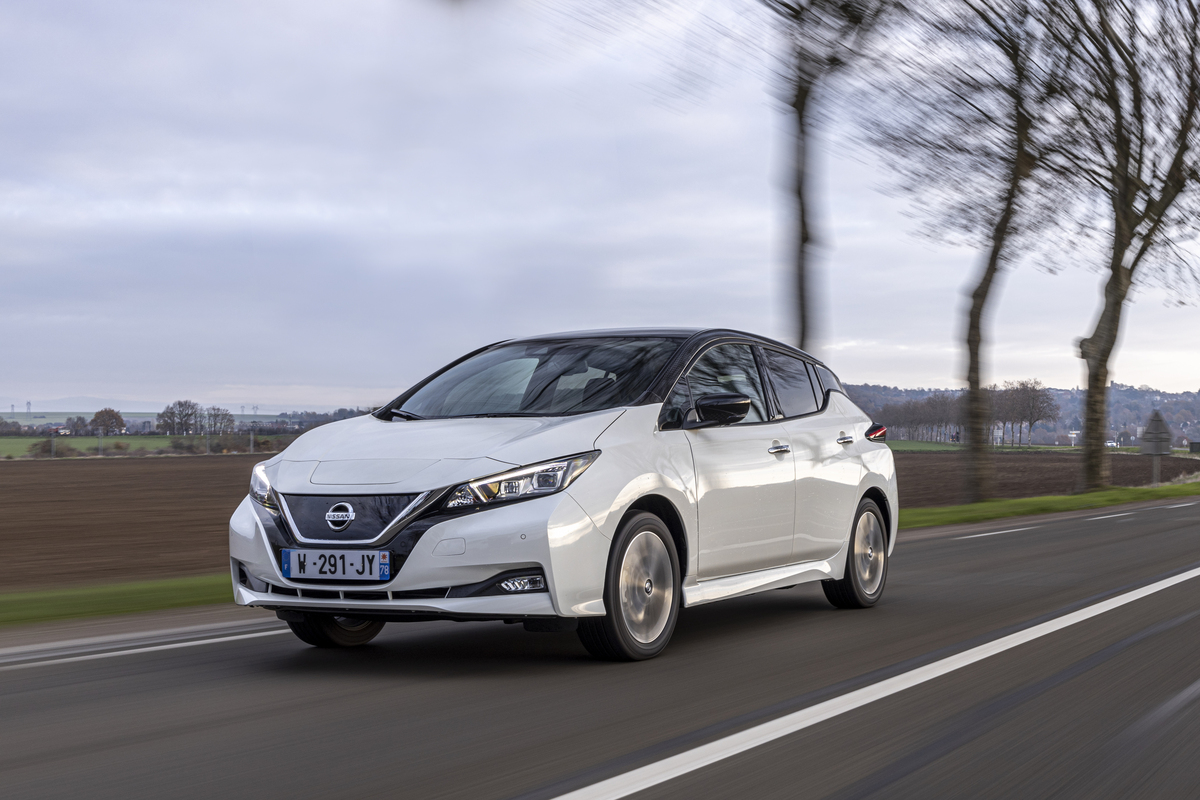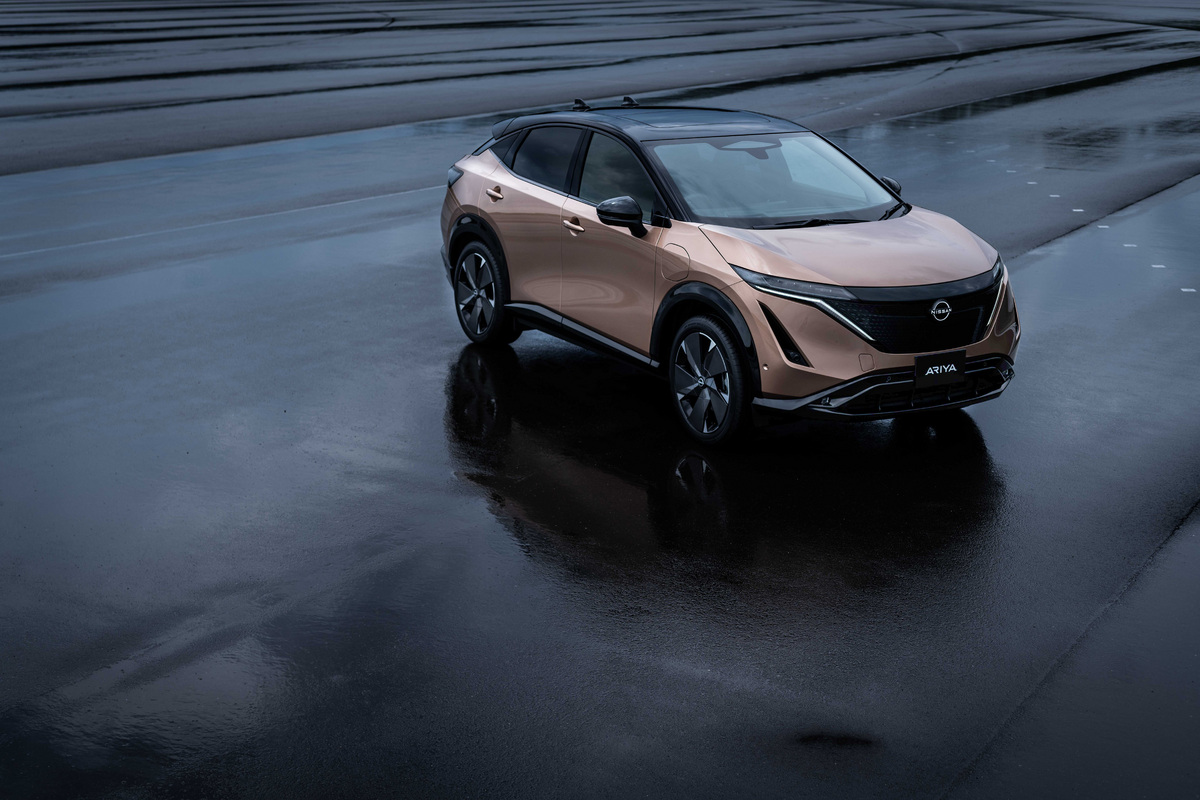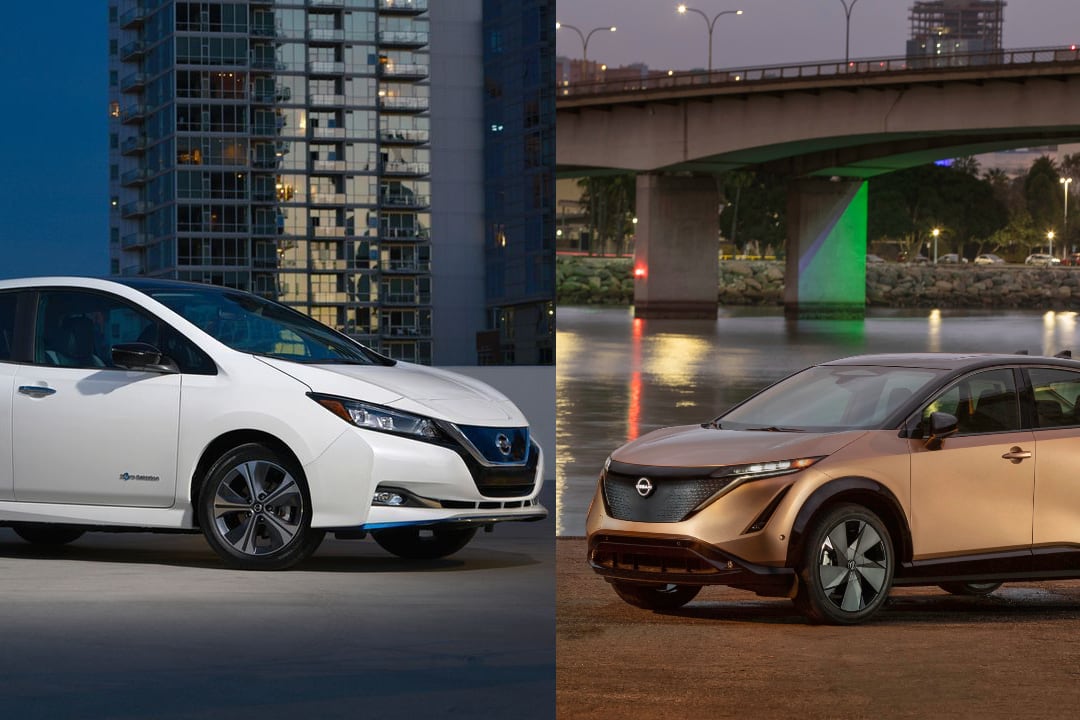This month’s EV of the month award is dedicated to a reliable, solid performer and to its successor. We’re speaking of the Nissan Leaf and the eagerly anticipated Nissan Aria.
The Nissan Leaf
The Leaf was the first EV we’ve ever driven. First introduced in 2010(!), from 2013 to 2019 it was consistently among the top-3 best selling EVs in Europe. (Most of that time ranked second after the Renault Zoe.) It was even the world’s best selling electric car from 2011 to 2014 and 2016. Only the arrival of Tesla’s Model 3 and most recently some new vehicles from brands such as VW pushed it further down the ranks from 2020.

The car was available first with a 24 kWh battery and from 2018 with 40 and 62 kWh versions. Overall as of 2020 more than 500’000 Leaf’s had been produced. The popularity of the Leaf can probably be explained by a number of factors:
- Compact, yet spacious enough interiors. One of the few early EVs that would be suitable for a small family (in contrast to e.g. the ZOE).
- Practical EPA range of 364 km (for the 2019 64 kWh battery version)
- Decent trunk space
- Comparably affordable at 30k-40k Euros
The Leaf’s efficiency measured by Bjørn Nyland at 151 Wh/km and 220 Wh/km at 90 and 120 km/h, respectively, is fair - but of course not comparable to the efficiency of say a Tesla Model 3. Some other obvious shortcomings of Leaf are lack of active thermal management of the battery and using legacy fast charging standard Chademo even for the 2nd generation.
Overall the Leaf could be concluded as simply a practical EV at a decent price! And with its leading role in the early EV market the Leaf alone could’ve been our EV of the month. But we decided to have it share the honors with the just-released Nissan Ariya:
The Nissan Ariya
The Nissan Ariya has been long awaited by current Leaf drivers to arrive as a modern EV, overcoming the Leaf’s drawbacks. And with better range and size the Ariay is also expected to attract new buyers.

The standard version of the car has 66 kWh battery (adding 4 kWh to Leaf’s highest trim version). As the Aryia is bigger in dimensions but also heavier, WLTP driving range for the base version has improved over the Leaf’s by only 18 km to 403 km. The all wheel drive version has a 91 kWh battery that not only gives the car a better performance, but also bumps the WLTP range to 499 km. Making longer trips will be supported by 130 kW CCS capability that shifts Nissan also finally away from using Chademo standard.
Ariya’s interior is very modern. Materials look and feel premium and this a clear advantage over the competitors at the same price level. Nissan has now also understood that the infotainment system is something to bet on and there is indeed a great progress made from the Leaf’s ancient system.
Aryia is classified as an electric crossover SUV and looks spacious also when sitting on the second row. The trunk volume comes in at 468 liters compared to the leaf’s 435 liters. Though some of the direct competitors like VW ID4 and Mach E have bigger cargo capacity than Aryia.
Something that early EVs and also Leaf did not offer is a trailer towing capability. Luckily this is possible now for new EVs. For DIY fans, the front wheel drive version’s 750 kg towing capacity might be enough. If you have a hobby that requires towing heavier loads, then you need to buy an AWD version that takes the number to 1500 kg.
The price of the Aryia starts from 50k EUR for the standard battery and goes up to 65k EUR for the big battery and AWD version (depending on the market). Compared to a Tesla Model Y and Kia EV6 this is an attractive price but the competitors might also have a bit more to offer. Looking at the whole package of price, range, and equipment Aryia will be a strong competitor for VW’s ID.4, Skoda Enyaq and Hyundai Ioniq 5.
Here are some of the early video reviews for the Nissan Ariya:
Bjørn Nyland initial exterior review:
Fully Charged on the Nissan Ariya


